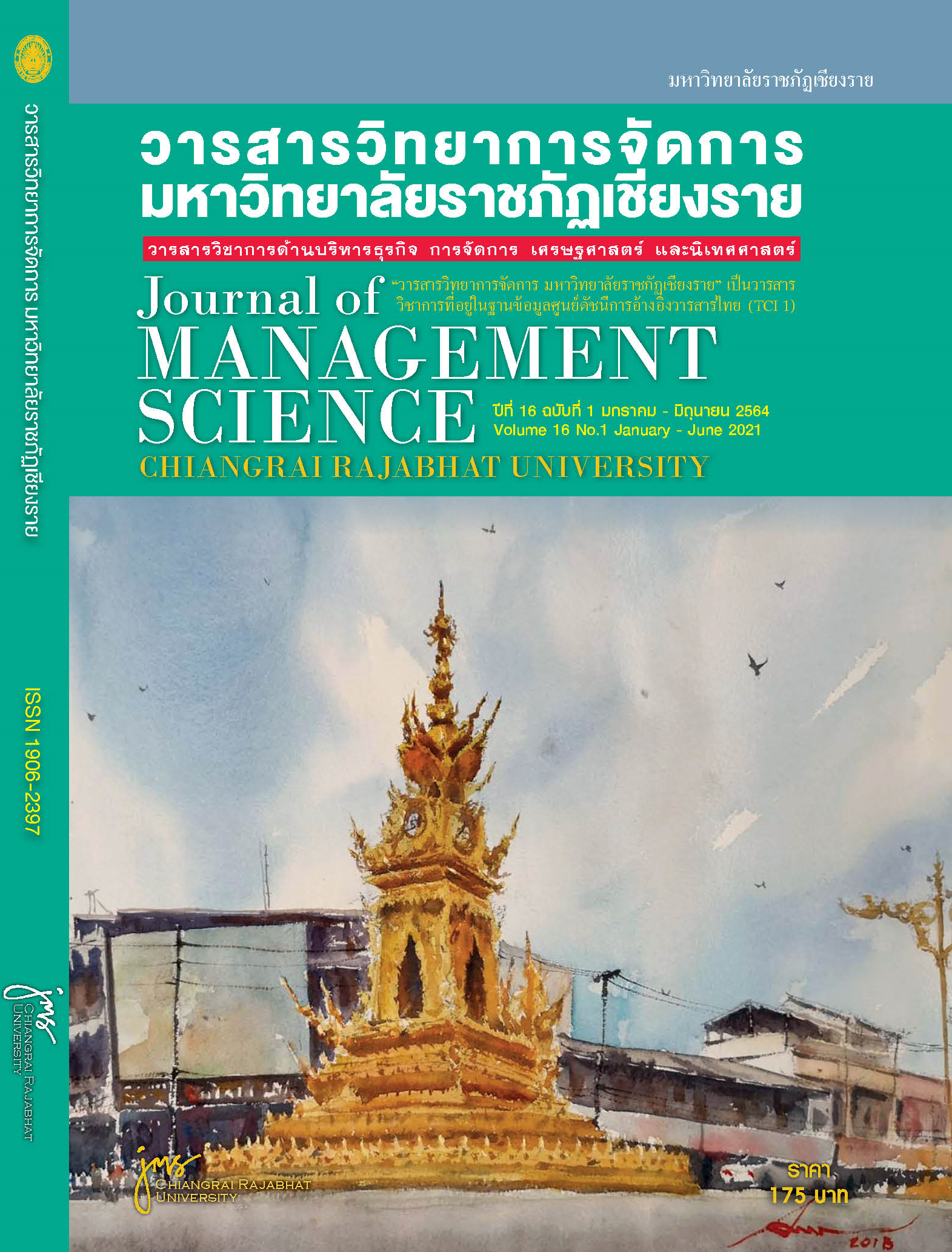Enhancing Competitive Advantage for SMEs of Thailand in ASEANs by Adopting Development and Driving Logistics Management
Main Article Content
Abstract
The research’s objectives are to analyze and evaluate competitiveness of Thai SME importers and exporters, compared with competitors in ASEAN countries. Secondly, to evaluate their efficiency and effectiveness of using logistics management. The literature review is conducted in area of logistics management, factors influence with logistics adoption and logistics performance measurement system. The study distributes questionnaires 386 samplings and conducts in-depth interview with 95 top management. The questionnaire has confidence level at 0.956. The result reveals that Thai firms have higher service quality than foreign firms. However, they lack of professional services and effective cost management. The found issues are they lack effective transport network and system. Further, they lack understanding of logistics and marketing in ASEAN countries, including lacking of adopting modern technology and supporting from the government. Evaluating competitive advantage of Thai firms reveals that most of them have clear vision and higher quality enhancement, if having support from Thai government and effective supply chain network management. The factors can enhance competitive advantage to Thai firms efficiently and effectively.
Article Details
Views and opinions expressed in the journal do not necessarily reflect those of the editors.
References
Arre, Worapon. (2010). Supply Chain Management and Problems of the 4 and 5 Star OTOP Manufacturers in Chonburi Province. Thesis. Chonburi: Burapha University. (in Thai)
Barney, J. (2001). Is the resource-based ‘view’ a useful perspective for strategic management research? Yes. Academic of Management Review, 2 (1), January, 41–56.
Chakrom, Nuchanet. (2561). SMEs 4.0 Stable, Wealthy and Sustainable. E-journal of Department of Primary Industries and Mines. (60).5-7. (in Thai)
Cronbach, L. J. (1990). Essentials of psychological testing (5th ed.). New York : Harper Collins Publishers. (pp.202-204).
Department of Industrial Promotion. (2018). Evaluation of efficiency and capability of Thai SMEs in the manufacturing sector. Bangkok: Faculty of Economics Chulalongkorn University. (in Thai)
Grant, B., Lambert, M., Stock, R. and Ellram, M. (2006). Fundamentals of Logistics Management, McGraw-Hill, Maidenhead.
Intaravetvilai, Kitti. (2008). Enhancing competitive advantage through using Logistics management. Thesis. Chonburi: Burapha University. (in Thai)
Kotler, P. & Armstrong, G. (2010). Principles of Marketing. (13th ed.). Boston: Pearson Education, Inc.
Lee, J.S.,& Hsieh, C.J. (2010). A research in relating entrepreneurship, marketing capability, innovative capability and sustained competitive advantage. Journal of Business & Economics Research. 8(9), 109-119.
Margaret A. Peteraf (1993). The Cornerstones of Competitive Advantage: A Resource-Based View. Strategic Management Journal, Vol. 14, No. 3. (Mar., 1993), pp. 179-191.
Office of Small and Medium Enterprise Promotion. (2020). No.4 SME Strategic Plan (2017-2021). Bangkok: OSMEP Press Publishing. (in Thai)
Petchprasert, Narong. (1975). Trade Unions and Chambers of Commerce in Thailand. Master of Economics thesis, Thammasat University, Bangkok. (in Thai)
Porter, M.E. (1990). The Competitive Advantage of Nations. Competitive Intelligence Review, 1, 14.
The Council of Logistics Management (CLM). (1986). What's It All About?, Oak Brook, IL.
Theppitak, T. (2015). Logistics Management. Bangkok: Thammasam Printing. (in Thai)
Yamane, Taro.1973. Statistics: An Introductory Analysis. Third editio. New York: Harper and Row Publication.


